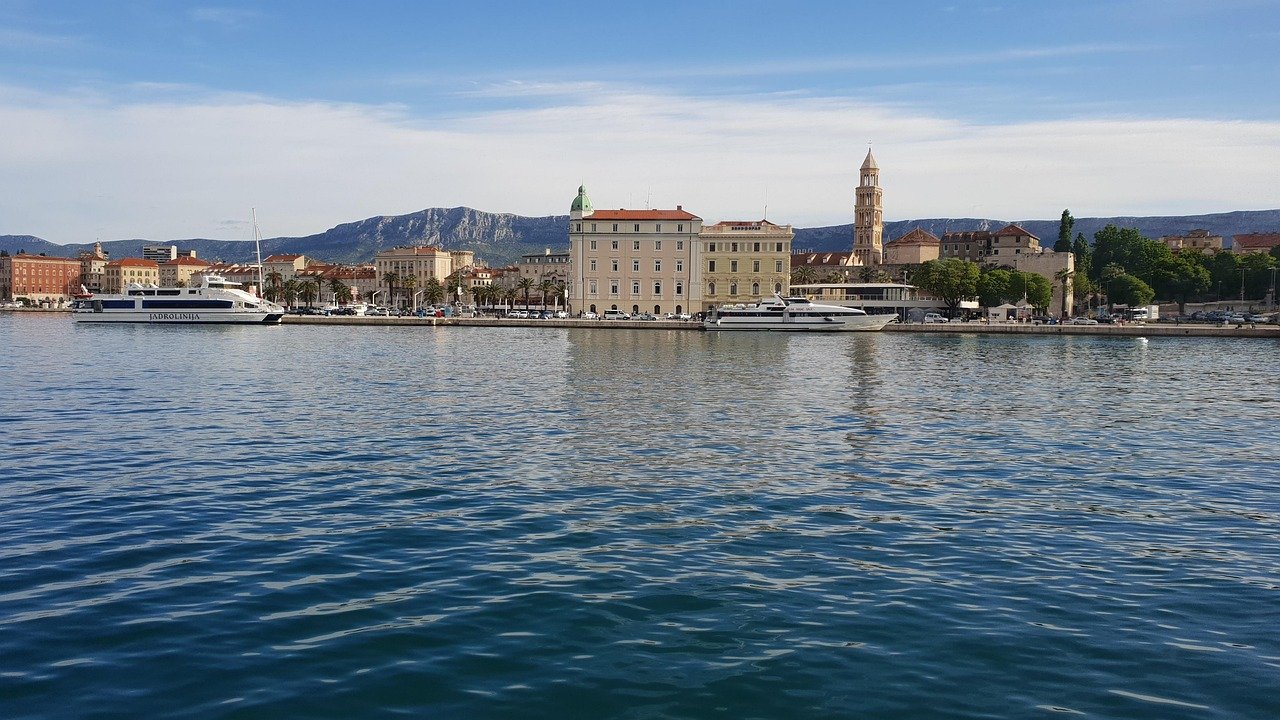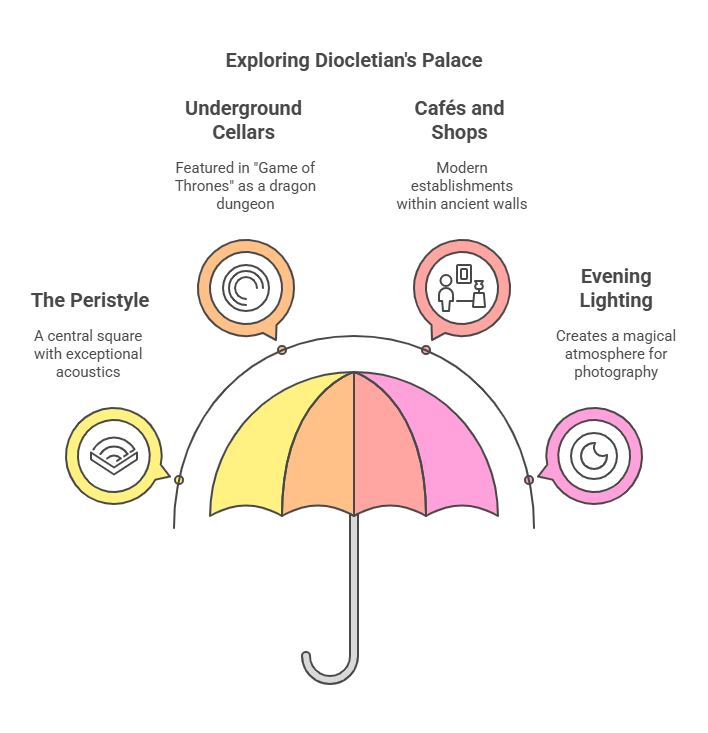Essential guide to Split, Croatia’s Historic Charm

Ready to swap daydreams for Dalmatian reality? Split isn’t just a destination—it’s a mood. Picture this: 1,700-year-old Roman ruins where emperors ghost-wrote your vacation script, turquoise coves begging for a cannonball, and a promenade where espresso sips turn into Aperol sunset toasts. This is your essential guide to Split, Croatia—the Adriatic jewel where ancient stone walls flirt with yacht-studded marinas, and “chill” is a local dialect (looking at you, fjaka). Whether you’re here to geek out on history or live out your Mamma Mia! fantasy (sans ABBA), consider this your backstage pass. Let’s go.
Why Split Should Be Your Next Travel Destination
Split offers a unique opportunity to discover UNESCO World Heritage sites during the morning hours, followed by a chance to relax in the pristine, clear waters by the afternoon.
This coastal Croatian city has transformed from a transit hub to one of Europe’s most sought-after destinations, attracting history enthusiasts, beach lovers, and culture seekers alike.
Exploring Diocletian’s Palace: The Ancient Heart of Split
At the center of Split’s appeal lies Diocletian’s Palace, a remarkable Roman complex built in the 4th century.

This UNESCO-protected site stands apart from traditional museums, serving as a vibrant, integral part of the city where locals and visitors mingle amidst its ancient walls.
What Makes Diocletian’s Palace Special:
- The Peristyle (central square) offers exceptional acoustics and serves as a gathering place for visitors
- Underground cellars featured in HBO’s “Game of Thrones” as Daenerys’ dragon dungeon
- Numerous cafés, restaurants, and shops operate within the ancient walls
- Evening lighting creates a magical atmosphere perfect for photography

For the best experience, visit early in the morning to avoid crowds or during sunset when the limestone walls glow in golden light.
Local guides offer tours that reveal hidden details most visitors miss.
Must-Visit Historical Attractions in Split
Cathedral of Saint Domnius and Bell Tower
This unique cathedral was originally Emperor Diocletian’s mausoleum before being converted to a Christian church in the 7th century.

The bell tower climb rewards visitors with panoramic views across Split’s terracotta rooftops and the sparkling Adriatic Sea.
Visitor Tip: Purchase a combination ticket that includes the cathedral, bell tower, crypt, baptistery, and treasury for the best value.
Want to know more about Eastern Europe? Read our article: Top Eastern Europe Destinations.
Temple of Jupiter
This well-preserved Roman temple dedicated to the king of gods now serves as a baptistery. I

Inside, you’ll find a striking baptismal font and an ancient sphinx brought from Egypt during Roman times.
Grgur Ninski Statue
Created by renowned sculptor Ivan Meštrović, this imposing statue depicts Bishop Gregory of Nin, who advocated for the Croatian language in religious services.

Be sure to touch his toe; local tradition says it brings good luck and ensures you’ll visit Split again.
Experiencing Split’s Mediterranean Lifestyle
Riva Promenade: Split’s Living Room
The palm-lined Riva promenade represents the modern heart of Split. This waterfront boardwalk transitions beautifully throughout the day:

- Mornings: Locals enjoy coffee while watching fishing boats return
- Afternoons: Perfect for people-watching and gelato breaks
- Evenings: The promenade comes alive with music, cocktail bars, and sunset views
Marjan Hill: Split’s Green Oasis
Rising west of the city center, Marjan Hill provides a refreshing escape from urban life. The forested peninsula offers:

- Well-maintained walking and cycling paths
- Panoramic viewpoints overlooking the city and surrounding islands
- Hidden beaches like Kašjuni and Bene
- Historic churches with remarkable frescoes
Pack a picnic and spend a half-day exploring this local favorite. The hill is accessible by foot from the city center or via the stairs near the Varoš neighborhood.
Split’s Culinary Scene: Where Dalmatian Flavors Shine
Split’s food scene celebrates Mediterranean ingredients with Croatian tradition. Must-try local specialties include:

- Black risotto (crni rižot) colored with cuttlefish ink
- Pašticada (slow-cooked beef in sweet-savory sauce)
- Fresh seafood platters featuring the day’s catch
- Soparnik (traditional Swiss chard pie)
For authentic experiences, venture beyond the palace walls to family-run konobas (taverns) in neighborhoods like Varoš and Lučac.
Day Trips From Split: Island Hopping and Coastal Exploration
Split’s strategic location makes it the perfect base for exploring nearby islands and coastal attractions:
Blue Cave and Blue Lagoon

This popular boat tour takes you to the mesmerizing Blue Cave on Biševo Island, where sunlight creates an otherworldly blue glow underwater. The trip typically includes swimming stops at the Blue Lagoon and visits to charming island villages.
Hvar Island: Croatia’s Sunniest Spot
Just a ferry ride away, Hvar offers lavender fields, Renaissance architecture, and some of Croatia’s best beaches.
The island balances upscale beach clubs with authentic villages, making it perfect for day-trippers seeking variety.
Klis Fortress
Game of Thrones fans will recognize this medieval fortress as the city of Meereen.
Beyond its Hollywood fame, Klis provides spectacular views over Split and the surrounding countryside, offering excellent photography opportunities.
When to Visit Split

- Peak Season (June-August): Warmest weather and vibrant atmosphere, but expect crowds and higher prices
- Shoulder Season (May, September-October): Pleasant temperatures with fewer tourists and reduced rates
- Off-Season (November-April): Authentic local experience with mild winters, though some attractions have limited hours
Where to Stay in Split

- Within Diocletian’s Palace: Atmospheric boutique accommodations within ancient walls
- Varoš Neighborhood: Charming stone houses just steps from the center
- Bačvice Area: Near Split’s most popular beach with family-friendly options
- Meje District: Upscale waterfront properties with stunning views
Getting Around Split

Split’s compact historic center is best explored on foot. For longer distances:
- Public buses connect all neighborhoods and suburbs
- Uber and local taxi services operate throughout the area
- Bicycle rentals offer a pleasant way to explore the Marjan peninsula
Planning Your Perfect Split Itinerary
Whether you have two days or two weeks, Split rewards travelers with its perfect blend of history, culture, and coastal beauty.
The city’s relaxed pace encourages visitors to embrace “fjaka“—the” Dalmatian concept of sweet idleness and mindful living.
Bring comfortable walking shoes for cobblestone streets, swimsuits for unexpected beach breaks, and an open mind for cultural discoveries.
Split isn’t just a destination; it’s an experience that captures the essence of Mediterranean life.
FAQ: Everything You Need to Know About Visiting Split, Croatia
When is the best time to visit Split?
May-June and September-October offer ideal conditions with warm temperatures, swimmable sea, and fewer crowds compared to the peak July-August season. These shoulder months provide the perfect balance of good weather and more affordable accommodation.
How many days should I spend in Split?
A minimum of 3 days allows you to explore the historic center, enjoy beach time, and take one day trip. For a more relaxed pace with multiple excursions to nearby islands and attractions, 5-7 days is ideal.
Is Split suitable for family travel?
Absolutely! Split offers family-friendly beaches with shallow waters, interactive museums like the Museum of Senses, and plenty of gelato stops to keep children happy. The traffic-free palace area provides a safe exploration space for families.
What’s the best way to get from Split Airport to the city center?
The most convenient options are the direct airport shuttle bus (30 minutes, runs hourly) or a taxi/Uber (25 minutes). If you’re on a budget, public bus #37 connects to the city with a transfer required.
Can I use euros in Split, or do I need Croatian currency?
While Croatia adopted the euro as its official currency in January 2023, it’s always good to have some cash on hand. Credit cards are widely accepted in restaurants, hotels, and larger shops, though some smaller vendors may prefer cash.
Is Game of Thrones tourism still popular in Split?
Yes! Fans can visit several filming locations, including Diocletian’s Palace cellars (Daenerys’ dragon dungeon) and Klis Fortress (Meereen). Specialized Game of Thrones tours operate daily during the tourist season.




